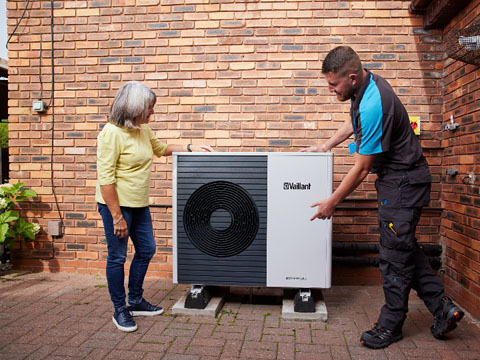The evolution of heat pump efficiency from homes to businesses has marked a significant advancement in both technology and environmental sustainability. Heat pumps, which transfer heat rather than generating it through combustion, have undergone remarkable improvements in efficiency and versatility over the decades. Initially, their use was limited to residential applications, where they provided a more energy-efficient alternative to traditional heating systems like furnaces and electric heaters. Early models were primarily designed for moderate climates, but as technology progressed, heat pumps were adapted to perform effectively in a broader range of temperatures. In the early 2000s, the development of advanced refrigerants and compressor technologies led to substantial gains in efficiency. These innovations allowed heat pumps to deliver greater heating and cooling capacities while consuming less energy. This period also saw the introduction of variable-speed compressors, which adjust the heat pump’s output to match the precise heating or cooling needs of a space. This ability to modulate operation not only enhances comfort but also reduces energy consumption, making heat pumps more cost-effective over time.

The push towards sustainability and energy efficiency in the 2010s further accelerated the evolution of heat pumps. Governments and regulatory bodies introduced stricter energy performance standards and incentives, encouraging both residential and commercial sectors to adopt more efficient systems. This era saw the integration of smart technology, how many watts does a heat pump use to enabling heat pumps to be controlled remotely and optimized for maximum efficiency through smart thermostats and building management systems. For businesses, this meant significant savings on energy costs and a reduced carbon footprint, aligning with corporate sustainability goals. The benefits of these advancements have extended beyond residential use into commercial and industrial applications. Modern heat pumps are now designed to handle larger loads and more demanding conditions, making them suitable for a wide range of business environments, from office buildings to large manufacturing facilities. In commercial settings, the ability to provide both heating and cooling from a single system has simplified HVAC management and reduced equipment costs. Additionally, heat pumps are increasingly being integrated with renewable energy sources, such as solar panels, to further enhance their environmental benefits.
The latest innovations in heat pump technology focus on improving performance in extreme weather conditions and increasing overall system efficiency. Cold climate heat pumps, for example, are engineered to operate efficiently even in sub-zero temperatures, making them viable for regions with harsh winters. Additionally, advances in inverter technology and enhanced heat exchangers have led to more reliable and energy-efficient systems that can adapt to varying load demands with greater precision and view the page www.jnodenergy.com. As the global emphasis on reducing greenhouse gas emissions intensifies, the role of heat pumps in achieving these goals becomes ever more critical. The continuous improvement in heat pump technology reflects a broader trend towards more sustainable and energy-efficient solutions across all sectors. For both homes and businesses, adopting the latest heat pump systems not only promises lower energy bills but also contributes to a greener and more sustainable future. The ongoing evolution of heat pump efficiency underscores a commitment to innovation and environmental stewardship, marking a pivotal shift in how we approach heating and cooling in the modern era.


